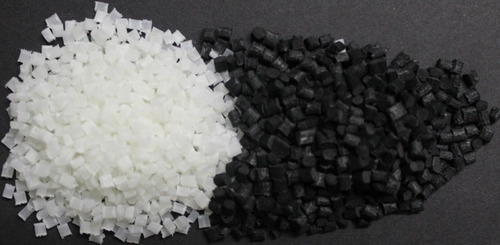Nylon 66 is synthesised by polycondensation of hexamethylenediamine and adipic acid. Equivalent amounts of hexamethylenediamine and adipic acid are combined with water in a reactor. This is crystallized to make nylon salt, which has precisely stoichiometric equivalents. The nylon salt goes into a reaction vessel where polymerization process takes place either in batches or continuously.
Polyamides also popularly known as Nylons are classified according to the number of carbon atoms contained in the primary structure between the nitrogen atoms. Accordingly, Polyamide 66 contains two groups of six carbon atoms each. The resulting structure offers marked difference in some of the properties useful for engineering applications when compared with other available Nylons. Polyamide 66 has a high tensile strength, high melting point, high flexural modulus and better creep resistance in comparison to other unmodified polyamides.
It is the hardest material with excellent rigidity among various types of extruded nylons. Polyamide 66 displays high resistance to wear and high degree of dimensional stability because of lower moisture absorption. It offers good resistance to fuels, most organic solvents and alkaline solutions at moderate temperatures. These, in addition to the overall well balanced combinations of properties render Polyamide 66 useful in many mechanical applications with high load.

